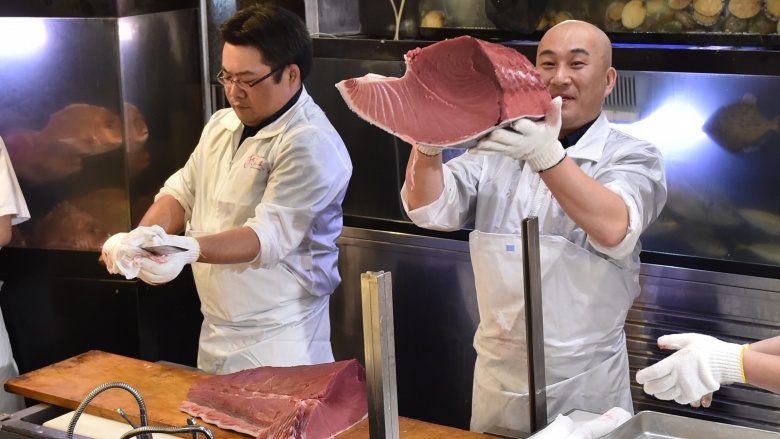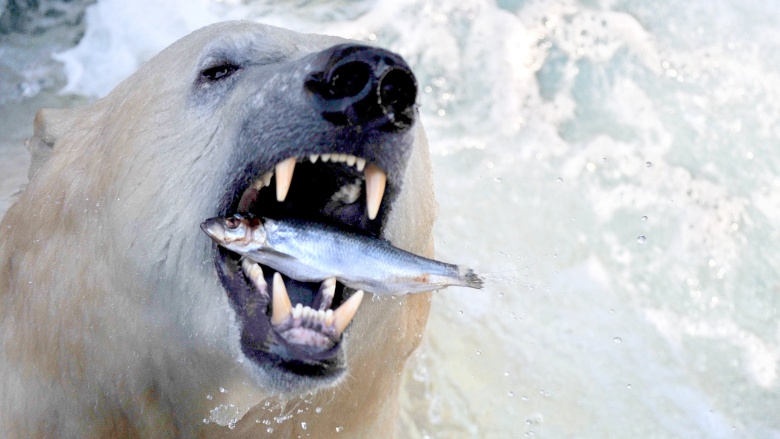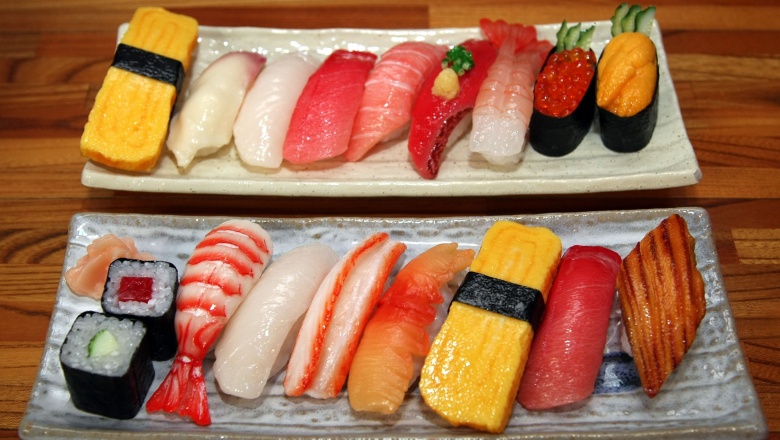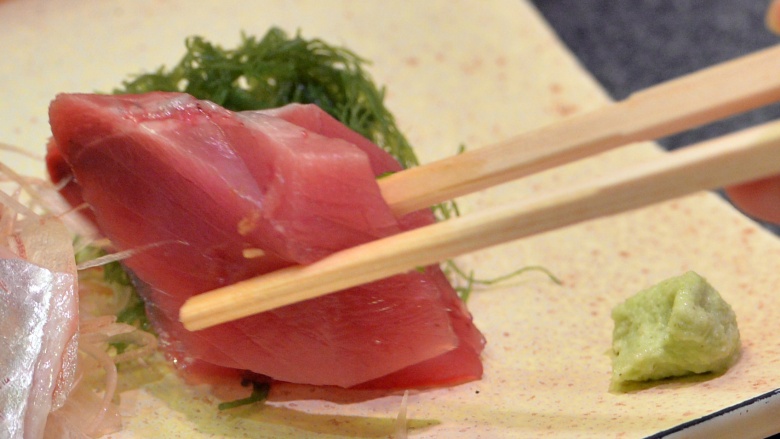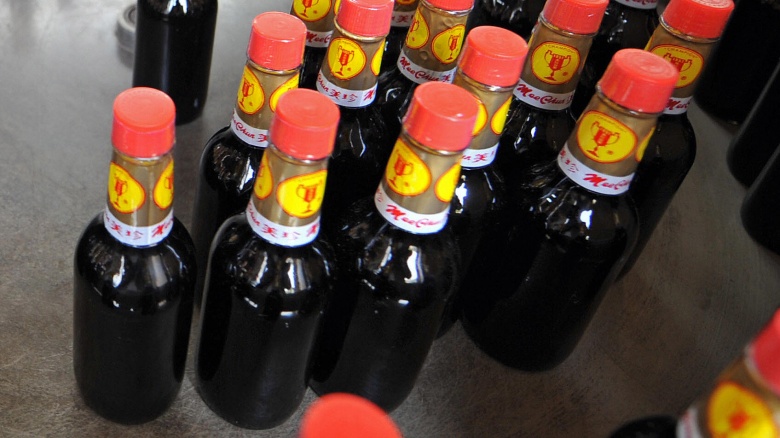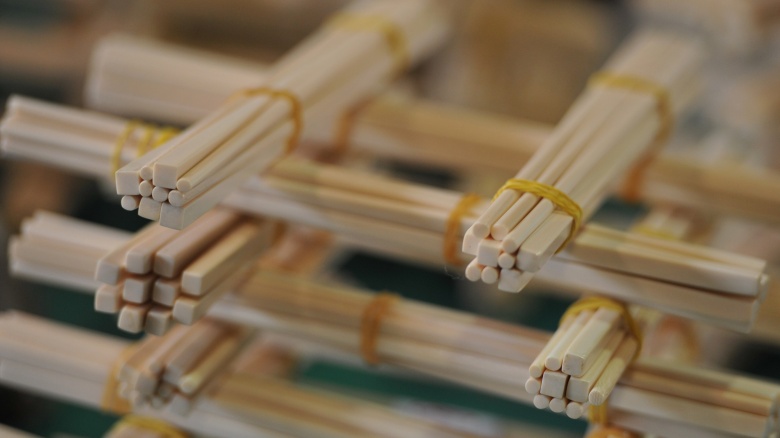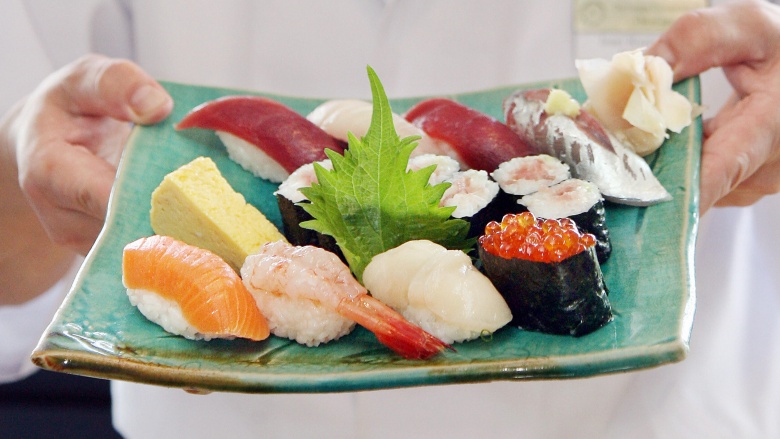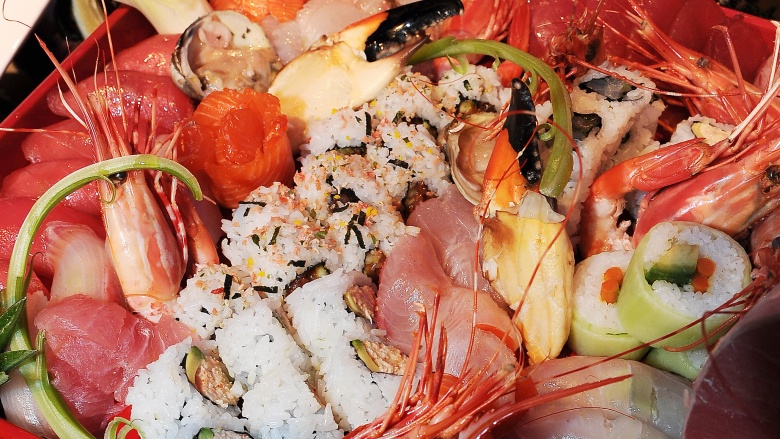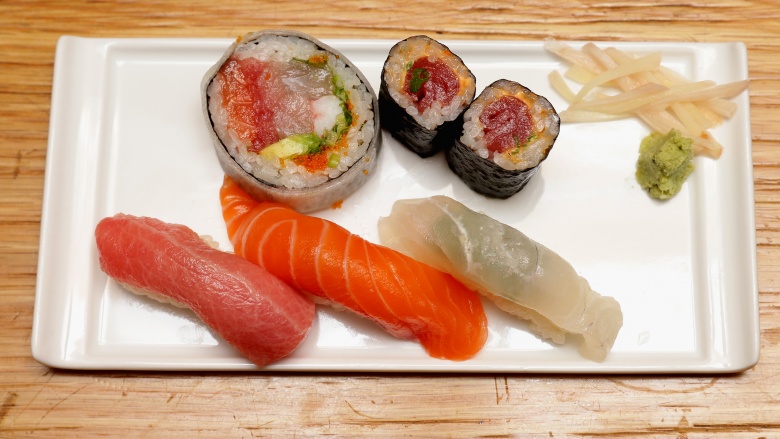Sushi Myths That Are Very Stupid
Sushi is a whole lot more than just hunks of raw fish that you try to get your boring friends to eat. Before sushi hit America full force in the early 1990s, it had a very rich and interesting history in Japan, very little of which has made it to the states in any reliable form. Rumors and myths about sushi are as plentiful as the varieties of sushi itself, and unless you're a real fish aficionado, you might just be living a lie. Here are a few huge sushi myths that you should stop believing immediately.
Never get sushi on a Monday
There was a time when a restaurant's fish deliveries only happened on Tuesday or Wednesday, based on whatever was happening at the local fish market, so by the time Sunday and Monday rolled around, you were eating last week's fish. While this may have been true once, before countless modern trucking, shipping, and ordering innovations, we no longer have to worry about specific days for sushi. Your local sushi joint definitely knows how to keep your food fresh and ready for your eager chopsticks.
The fresher the better
Sushi fans: you know when you're watching a nature documentary and you see a bear snatch a live fish out of the air and your mouth starts to water? The truth of the matter is that fresher is not actually better; most fish are flash-frozen immediately after being caught, right on the boat. The freezing process obviously helps the fish last longer, but it also kills any lingering parasites that might have found their way into the flesh. Sushi experts also know that fish with a little bit of age is a good thing, because with time comes flavor.
Sushi will give you worms
The unfortunate truth of the lowly tapeworm is that you'll be able to find it in just about every kind of meat, and eating any undercooked meat is risky behavior when it comes to foodborne parasites. Fortunately, it's incredibly rare that you'll be eating something that hasn't been frozen at some point, whether it's beef, fish, or pork, and that will solve almost any parasitic problem that can rear its ugly head. Should a stray worm make its way through the careful checks before a slab of fish gets to your sushi chef, any catastrophic cestodes will be visible to the naked eye and never make it to your table.
Wasabi kills bacteria
Scientific studies have proven that authentic Japanese wasabi will effectively kill H. pylori bacteria, which is a cause of serious digestive problems. And historically, wasabi was used to kill certain bacteria when modern food preservation methods were not available. Sadly, you're not getting real wasabi at your average sushi restaurant, because it's incredibly difficult to grow, and subsequently very expensive. Instead, you're getting a paste of horseradish and green food coloring. While horseradish has also shown signs of killing bad bacteria, you still probably don't need it.
You should mix wasabi Into your soy sauce
Just don't do it. Wasabi's original germ-killing purpose is no longer valid, and you're not getting real wasabi anyhow, so today wasabi is just a fun condiment that you can trick your newbie friends with. The American palate has been trained to embrace Dorito-blasted pizza rolls and Guy Fieri's Poppin' Chick'n Jalapen-Oh-No-You-Didn't Nugget Punchers, and that's a problem for good sushi. Some chefs will brush your meal with a carefully balanced mix of soy and wasabi, but you probably don't have the culinary skills to hit the authentic balance. If you need wasabi, just put a little on top. And if you're still not happy, get your butt to a Buffalo Wild Wings instead.
Clean your chopsticks
There are about a million dumb faux pas you can commit when you walk into a sushi restaurant as an ignorant neophyte, but rubbing your chopsticks together is a cardinal sin. While many people seem to do it out of a weird perception of a "Japanese tradition" they read about on the Internet, others do it to remove invisible splinters from their sticks. Don't do it, because you're basically telling the sushi chefs that they use cheap chopsticks, full of tongue-destroying splinters. If you're that scared of a splinter, at least rub your shame under the table.
"Sushi" means "raw fish"
There are a lot of terrible things that America has done to sushi, from deep frying every damn roll to whatever goes into "spicy mayo," but at least we've mostly kept the whole raw fish aspect of sushi alive. In its most literal sense, "sushi" is the specific kind of cold, vinegar-flavored rice that is used in sushi, and the fish is just a fancy garnish. If you're looking for straight up slabs of delicious raw fish, go for the sashimi, and if you're into rolls with seaweed, ask for maki. It may be a little daunting at first, but it's all delicious.
Always avoid freshwater sushi
It's true that fish that live in freshwater lakes and streams have a higher potential to carry more dangerous bacteria, simply because a smaller environment lends itself to a higher probability of spreading bad stuff rapidly. But we eat cooked freshwater fish all of the time, so why can't we eat it raw? It's very rare that you'll actually find a sushi joint that serves lake fish, and if you do, it's probably a much higher-end place that can afford to make absolutely sure that the stuff they serve is perfect. While it's inadvisable to get bass sushi from your grocery store, don't pass up the chance if you find yourself at an especially fine restaurant.
Sushi is health food
Sushi is not inherently healthy, though it is a lot less unhealthy than the average American meal. Yes, it's almost always better, diet-wise, to choose a dinner of chirashi over swallowing half a lasagna. But there are a lot of hidden things in sushi that can easily set back your diet. A tablespoon of soy sauce has 10 calories, and even your most innocuous set of six maki rolls will have at least 30 carbs—and that's before you add tempura, spicy mayo, cream cheese, and whatever else you want to ruin sushi with. So, while you might not be eating a whole sack of pork rinds, you still need to rein it in.
Ginger is a condiment
The most egregious thing you can possibly do to your sushi is to add ginger to your rolls. Yes, they give you some thinly-sliced ginger and don't really tell you what to do with it, but resist the urge to take everything on your plate, mash it into a paste, and chug it. Ginger is meant to be tasted alone, between different rolls to cleanse the palate, to allow the flavor of the next bite to truly come through as it's meant to be. Laying ginger across your sushi is like topping your hot dog with toothpaste. Don't be an idiot.

